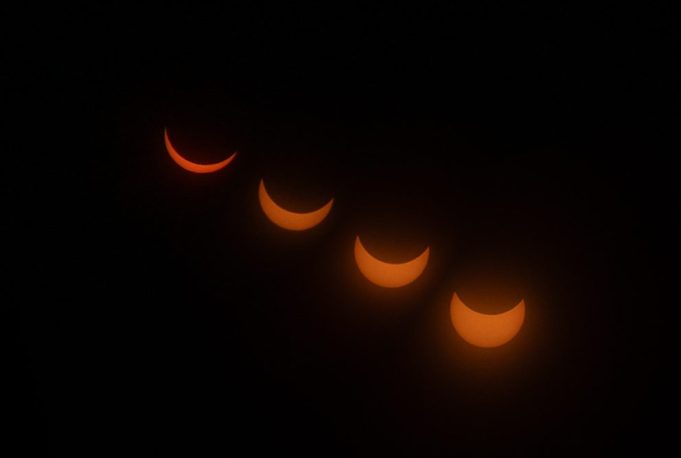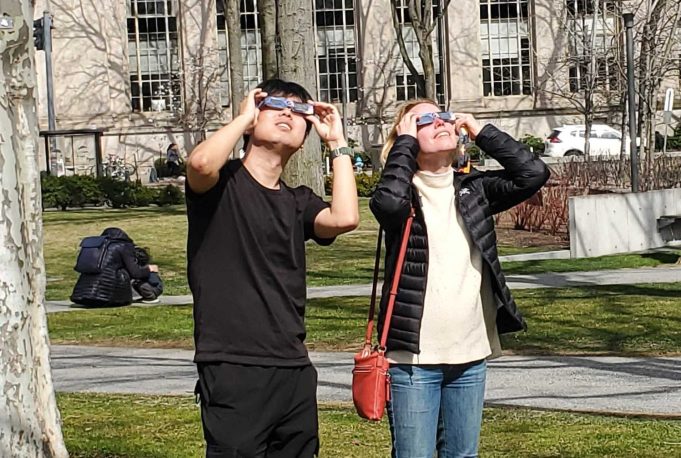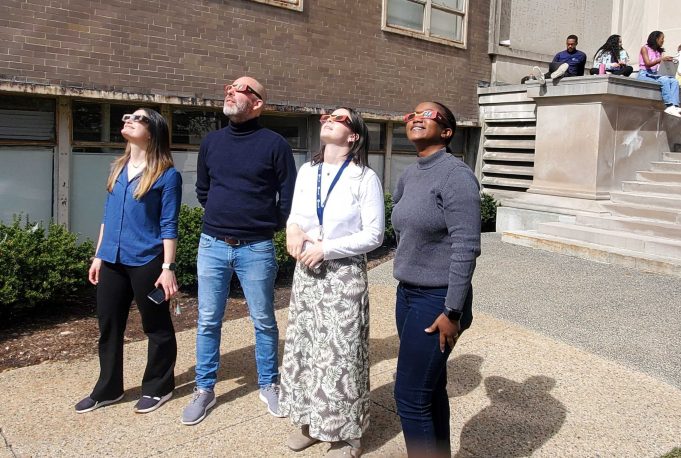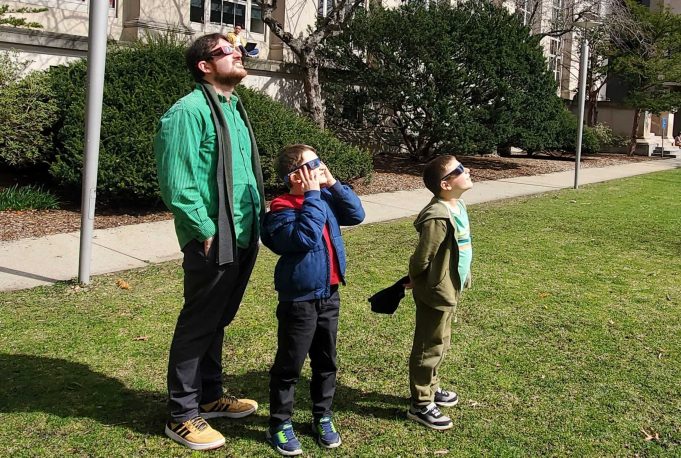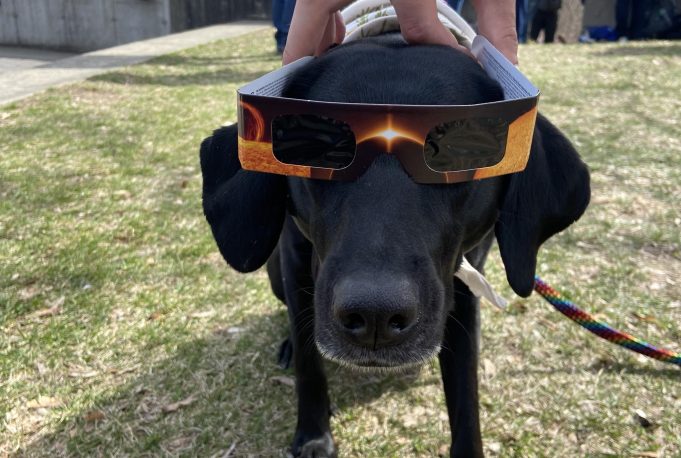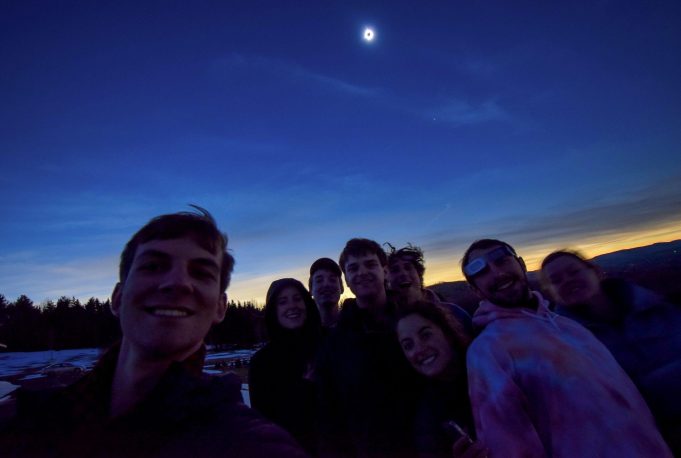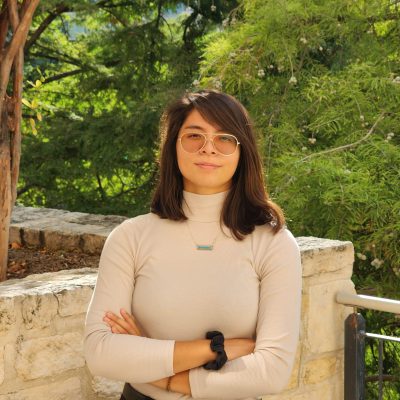Geeking out over the 2024 eclipse at AeroAstro
The AeroAstro community traveled far and wide, or just outside, to catch the solar eclipse on Monday, April 8. The department handed out ISO-approved solar glasses so all could view the last eclipse of its kind in the contiguous US until 2045. Hundreds of observers gathered on campus to catch 93% of the sun covered at its peak around 3:29pm.
Meanwhile, many AeroAstro staff and students elected to travel to the path of totality to catch the full eclipse, corona (the outermost part of the sun, normally obscured by the sun’s surface) and all.

Brian Mernoff, director of AeroAstro’s CommLab, who shared tips in MIT News for viewing and photographing the eclipse safely, went to Stowe with his family. His photos, shown above, use a technique called “lucky imaging,” where the images are originally captured as a short black and white movie. The best frames are then selected and stacked to create a more detailed image. This single image is then edited to increase the detail and highlight features.

Evan Kramer (PhD, Space Systems Lab), another accomplished astrophotographer, also traveled to Stowe – and endured the grueling return drive back to Boston – to take his own photos. In the above images, he captured the total eclipse right as the Earth plunged into twilight.
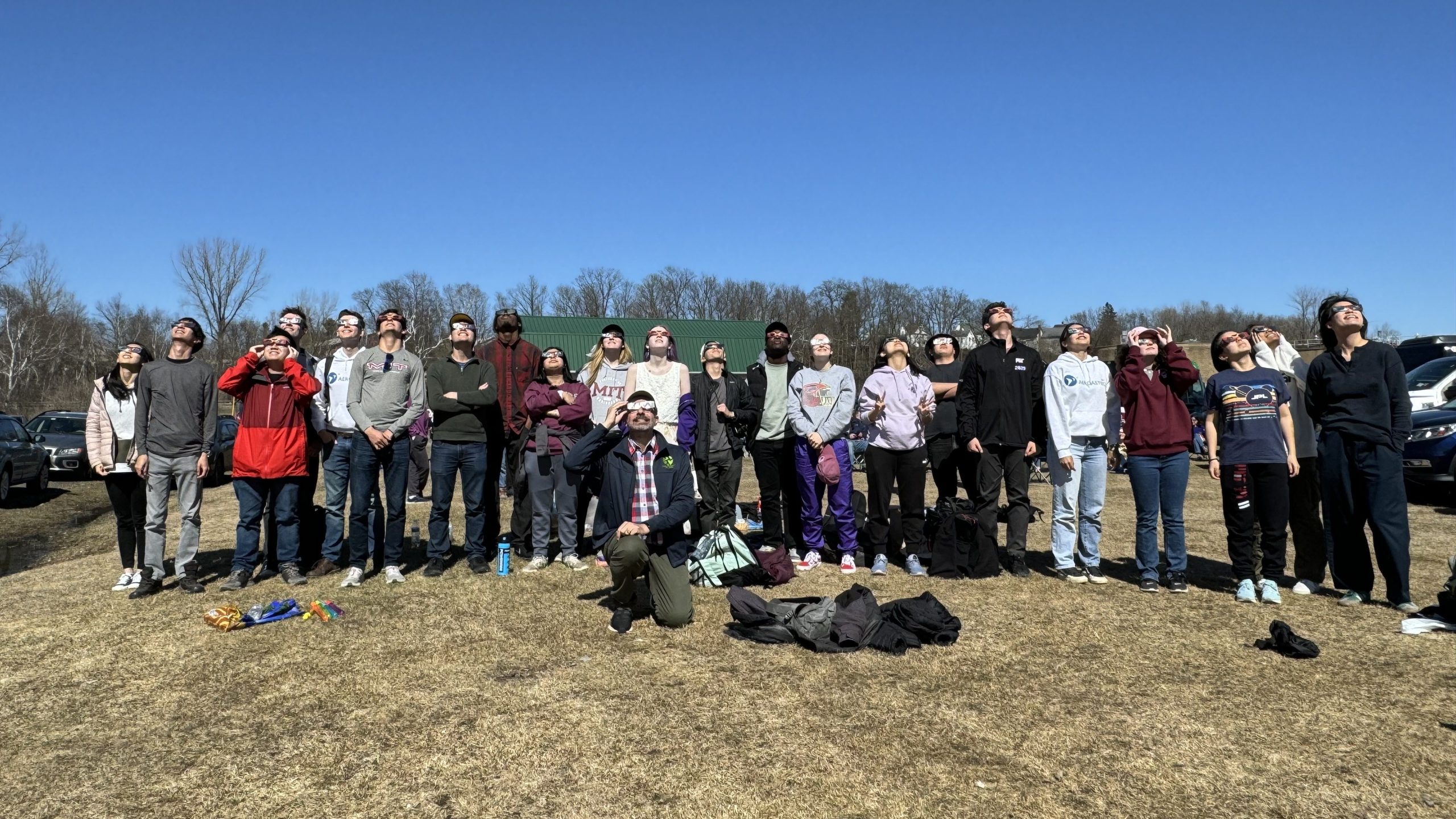
Students from 16.83 traveled as a group to Newport VT, to enjoy the eclipse together. George Lordos (ESL) called the eclipse experience a “once in a lifetime event, totally worth the effort!”
And the 15-hour traffic jam on the drive back to Cambridge? “Hopefully never again,” said Lordos.
The eclipse was a great opportunity for a community always looking skyward to pause and appreciate our celestial surroundings – a moment to look up, before getting back to looking ahead.
